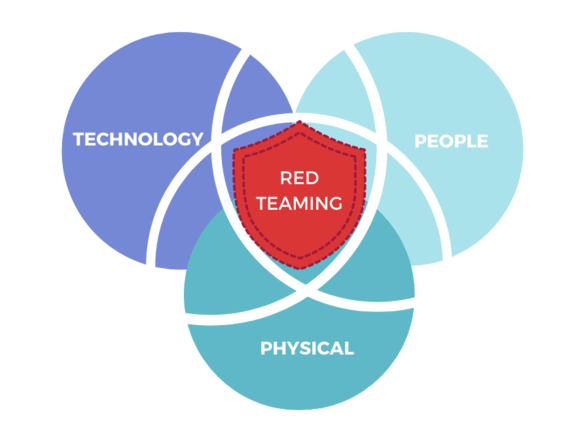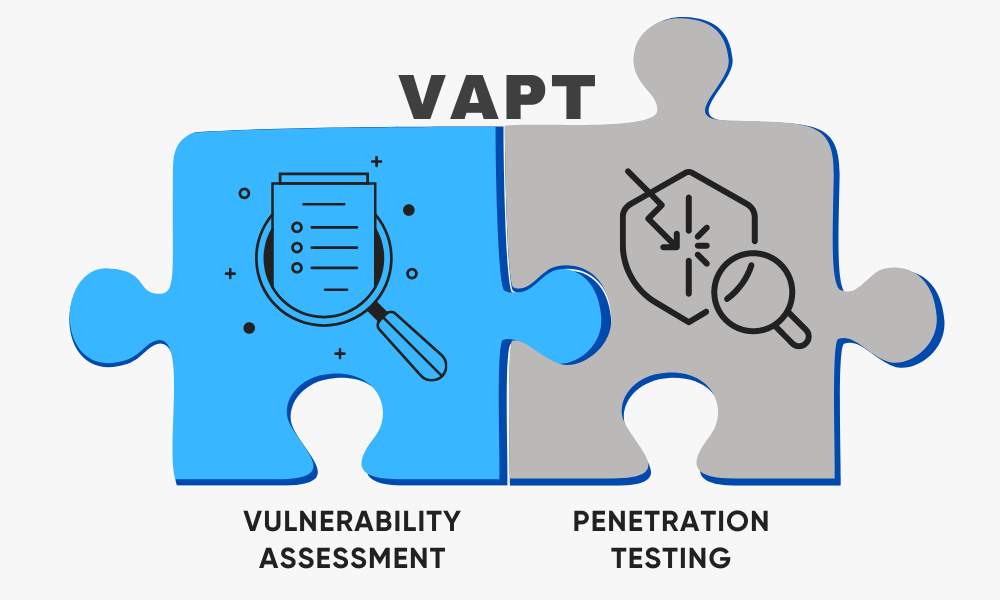
Welcome to WinVixx
Cyber Security Services
Our Cybersecurity services are tailored with the smartest and most innovative TTPs (Tactics, Techniques, and Processes) to critically protect organizations against the growing number of digital threats. These services cover a wide range of solutions designed to safeguard systems, networks, data, and operations, while also raising user awareness about potential threats.
- Cyber Defence Assessment (CDA)
- Red Teaming Assessment (RTA)
- Vulnerability Assessment and Penetration Testing (VAPT)
Service Champs
WinVixx Services
Cyber Defence Assessment (CDA)
Red Teaming Assessment (RTA)

Vulnerability Assessment & Penetration Testing (VAPT)
Our latest services
Services that help keep your organization secure
As cybersecurity pioneers, we leverage cutting-edge technology to safeguard your business, optimize processes, and provide executive-level protection in the digital age.

Cyber Defence Assessment (CDA)
WinVixx Cyber Defense Assessment (CDA) is a systematic evaluation of an organization’s cybersecurity posture, aimed at finding the matutiry of an organization to defend a cyber Attack by identifying vulnerabilities and areas for improvement.
WinVixx CDA is to assess maturity of the oraganization to defend a Cyber attack and those who are looking to build a new cyber defense function from the ground up, enhance their existing processes and supporting technology, or effectively measure their program performance, our consultants help by improving organization’s cyber defense posture against persistent and sophisticated real-world attacks.
The assessment is led by WinVixx consultants who leverage industry best practices and deep frontline expertise responding to advanced threats across various geographies and verticals. After the evaluation, WinVixx delivers a report that contains a detailed improvement roadmap and prioritized implementation recommendations specific to your organization's needs.
Our Approach
WinVixx consultants review key elements of critical functions of cyber defense.WinVixx consultants review key elements of critical functions of cyber defense,
which have been identified as foundational blocks for an effective security program:
Threat Modeling
Analyze potential threats relevant to the organization’s environment.
Consider threat actors, tactics, techniques, and procedures (TTPs).
Table Top exercises
Provide a structured environment to simulate response to cybersecurity incidents
Discuss roles and actions in response to a hypothetical cyber incident
Evaluate and improve existing plans and assess decision-making proces.
Compliance Check
Social Engineering Assessment
Review adherence to relevant regulations and standards (e.g., GDPR, HIPAA, PCI DSS).
Identify gaps in compliance that could expose the organization to legal risks.
Security Controls Review
Evaluate existing security controls (firewalls, intrusion detection systems, etc.) for effectiveness.
Assess policies and procedures related to incident response, access control, and data protection
Vulnerability Assessment
Conduct automated and manual scans to identify vulnerabilities in systems and applications.
Assess configuration settings, patch levels, and known vulnerabilities.
Evaluate existing security controls (firewalls, intrusion detection systems, etc.) for effectiveness.
Assess policies and procedures related to incident response, access control, and data protection
Penetration Testing
Simulate real-world attacks to identify exploitable vulnerabilities.
Test the effectiveness of security measures and incident response plans.
Social Engineering Assessment
Evaluate the organization’s susceptibility to phishing and other social engineering attacks.
Test employee awareness and response to potential threats.
Reporting and Recommendations
Provide a detailed report of findings, including identified vulnerabilities and security gaps.
Offer actionable recommendations to strengthen the security posture.
Develop a prioritized remediation plan to address vulnerabilities.
Schedule regular assessments to ensure ongoing security improvements.

Red Teaming Assessment (RTA)
WinVixx Red teaming assessments (RTA) simulate real-world cyber attacks to evaluate an organization’s security posture and incident response capabilities. Our RTA mimic real-world attack scenarios, provide insights into how an organization would fare against actual threat actors. It help uncover security weaknesses that may not be detected through traditional vulnerability assessments or penetration testing. WinVixx RTA is an invaluable service for organizations looking to bolster their cybersecurity defenses. By understanding their vulnerabilities and improving their response capabilities, organizations can better protect themselves against the evolving threat landscape.
Our approach towards RTA
Define Objectives and Scope
Objectives: Clarify the goals of the assessment (e.g., testing defenses, evaluating incident response).
Scope: Identify which systems, applications, and networks will be included. Establish boundaries to avoid impacting production systems.
Planning and Preparation
- Assemble the Red Team: WinVixx shall involve diverse skilled consultants who have competence in penetration testers, threat analysts, etc..
- Create Rules of Engagement (RoE) Document: Outline the rules for the assessment, including allowed methods, communication protocols, and reporting requirements.
Threat Modeling and Intelligence Gathering
- Threat Intelligence: WinVixx have subscribed to various threat feed which helps its consultants to research for potential threat actors, techniques, tactics, and procedures (TTPs) relevant to the organization.
- Information Gathering: Conduct reconnaissance to collect information about the target environment (e.g., network architecture, personnel, and public-facing assets).
Exploitation Phase
Vulnerability Identification: WinVixx not only rely on automated tools, but also deploy manual techniques to identify vulnerabilities in systems and applications.
Exploitation: Attempt to exploit identified vulnerabilities to gain access to systems, data, or escalate privileges.
Pivoting: After above two steps, WinVixx researchers attempt to move laterally within the network to access additional systems and data.
Post-Exploitation
Data Exfiltration: Simulate data theft to evaluate the organization’s ability to detect and respond to such activities.
Persistence: Test methods for maintaining access to compromised systems without detection.
Cleanup: Ensure that any changes made during the assessment are reversed to restore the environment to its original state.
Reporting and Analysis
Detailed Reporting: Document findings, including successful exploits, data accessed, and any vulnerabilities discovered.
Recommendations: Provide actionable recommendations to improve security measures and address identified weaknesses.
Debriefing with Stakeholders
Presentation of Findings: Share results with key stakeholders, including IT, security teams, and management.
Discussion
Engage in discussions about the implications of findings and the importance of remediation.
Remediation Planning
Actionable Remediation Steps: WinVixx’s technical writers develops a technical writeup which contains a prioritized plan base don the severity for addressing vulnerabilities and improving security controls.
Assign Responsibilities
WinVixx offers VAPT Services
Network Vulnerability Assessment and Penetration Testing
Focuses on identifying vulnerabilities in network infrastructure, including firewalls, routers, and switches.
Web Application Vulnerability Assessment and Penetration Testing
Targets web applications to find security flaws like SQL injection, cross-site scripting, and insecure configurations.
Mobile Application Testing
- Evaluates mobile applications for security vulnerabilities that could be exploited on mobile devices.
Social Engineering Testing
Simulates social engineering attacks (e.g., phishing) to assess employee awareness and response to potential threats.
Cloud Security Assessment
Focuses on vulnerabilities specific to cloud environments, including misconfigurations and access control issues.
API Security Testing:
Tests application programming interfaces (APIs) for vulnerabilities and security weaknesses.
Reporting and Analysis
Detailed Reporting: Document findings, including successful exploits, data accessed, and any vulnerabilities discovered.
Recommendations: Provide actionable recommendations to improve security measures and address identified weaknesses.
Debriefing with Stakeholders
Presentation of Findings: Share results with key stakeholders, including IT, security teams, and management.
Discussion
Engage in discussions about the implications of findings and the importance of remediation.
Remediation Planning
Actionable Remediation Steps: WinVixx’s technical writers develops a technical writeup which contains a prioritized plan base don the severity for addressing vulnerabilities and improving security controls.
Assign Responsibilities
Why choose us
We Assure top-tier cybersecurity solutions
While choosing WinVixx Cyber Security consulting and services, clients benefit from a comprehensive, proactive, and tailored approach that protects their business from the ever-evolving cyber threat landscape.

Our work process
Cyber threats keep leaders up at night.
We partner with you on the journey of reducing cyber risk so you can focus on driving value for your organization
Initial Consultation & Assessment
Understand the client's needs, environment, and security goals.
Risk Assessment & Vulnerability Assessment
Identify and evaluate vulnerabilities, threats, and risks in the organization’s systems, networks, and processes
Implementation of Security Controls
Deploy the security tools and solutions to safeguard the organization’s infrastructure and data.
Incident Response & Remediation
Respond to and recover from a cybersecurity incident or breach effectively
Need more information
Frequently asked questions
When we talk to clients about our consultants for their company, a few of the same questions come up.
Why does my organization need cybersecurity services?
Cybersecurity services are crucial for protecting your organization’s sensitive data, intellectual property, and infrastructure from cyber threats such as:
- Data breaches: Unauthorized access to sensitive information.
- Ransomware attacks: Cybercriminals encrypt your data and demand payment to restore access.
- Phishing scams: Fraudulent emails designed to steal login credentials or financial data.
- DDoS attacks: Disruptions caused by overwhelming your network or website.
Having robust cybersecurity services helps mitigate these risks, ensuring your business operates smoothly, complies with legal requirements, and builds trust with clients and customers.
What does a cybersecurity risk assessment involve?
A cybersecurity risk assessment is the process of identifying, evaluating, and prioritizing risks to an organization’s IT infrastructure. It typically involves:
- Identifying key assets (e.g., data, networks, applications).
- Evaluating potential vulnerabilities (e.g., outdated software, weak passwords, unpatched systems).
- Assessing the impact of different cyber threats (e.g., malware, insider threats, DDoS).
- Providing recommendations to mitigate risks, improve security practices, and strengthen defenses.
How often should my organization conduct vulnerability assessments and penetration testing?
- Vulnerability assessmentsshould be conducted at least quarterly, or more frequently if your systems are constantly evolving. You should also perform them after significant changes to your IT infrastructure (e.g., new software, updated configurations).
- Penetration testingis generally recommended on an annual basis. However, it’s a good idea to conduct penetration tests after major updates, such as system overhauls, cloud migrations, or if a new threat is identified that may affect your environment.

